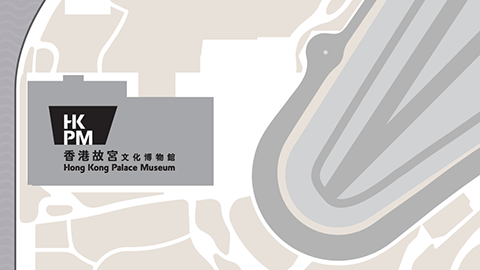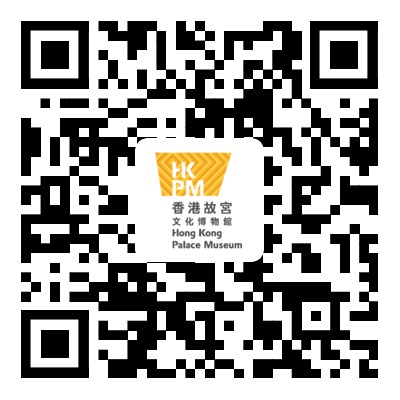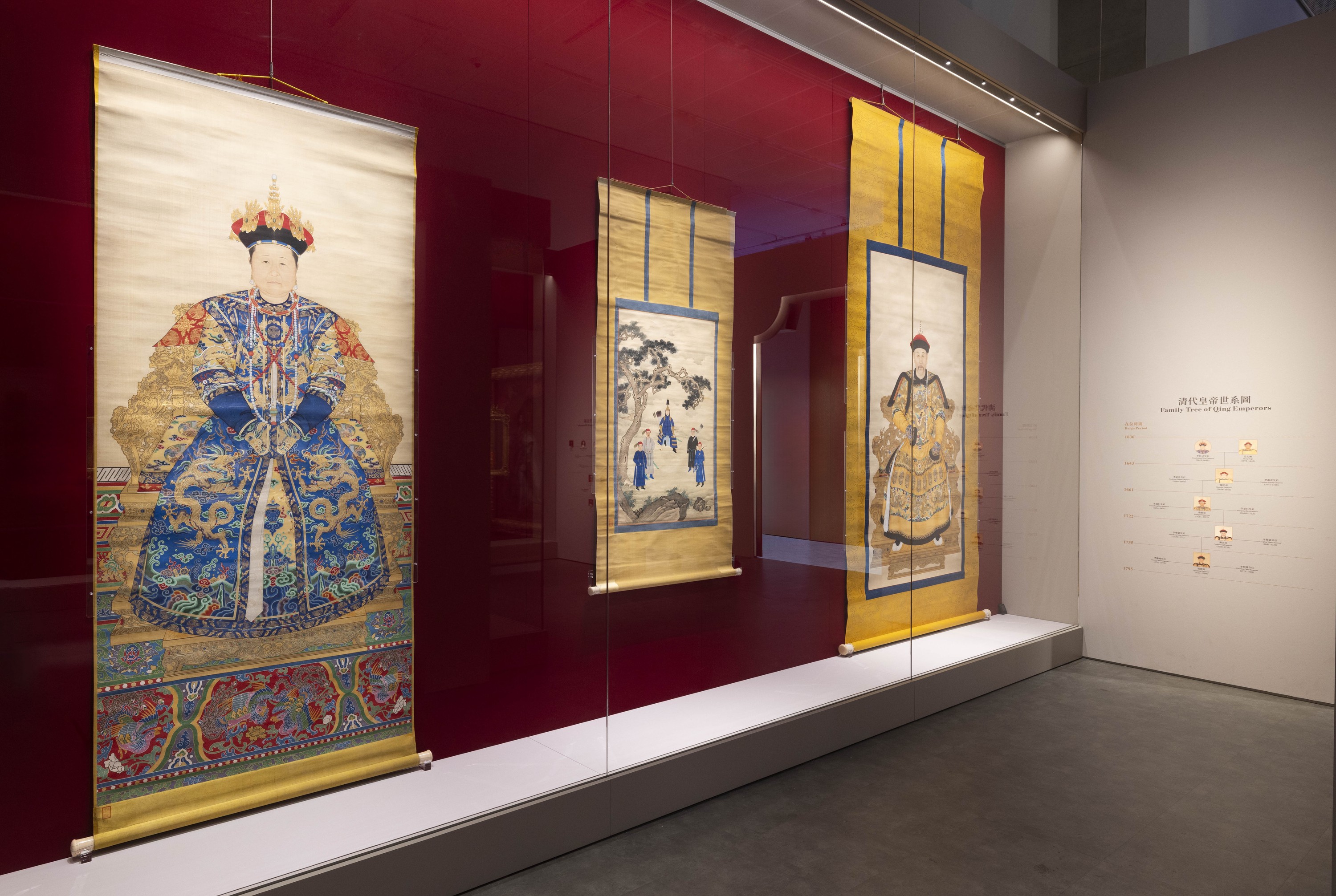Spectacular artworks highlighting influential players in Sino-French cultural exchange at the Forbidden City and the Palace of Versailles
The Hong Kong Palace Museum’s (HKPM or the Museum) special exhibition “The Forbidden City and The Palace of Versailles: China-France Cultural Encounters in the Seventeenth and Eighteenth Centuries” (“The Forbidden City and The Palace of Versailles”) spotlights a significant chapter in the rich history of mutual respect, inspiration, and exchange between China and France. Starting from today (19 February), the Museum is pleased to unveil approximately 20 newly arrived Chinese and French court treasures that must not be missed by visitors attending the HKPM during Art March Hong Kong 2025.
Rare portraits of the Kangxi and Yongzheng emperors
A highly significant artwork is The Kangxi Emperor in Military Attire. The Kangxi Emperor (r. 1662‒1722) reigned for 61 years in China, yet few portraits of his youth remain, rendering this painting an extraordinarily rare artefact. This painting of the young emperor in military attire, vividly depicts his martial spirit and skill in horsemanship and archery. Historical records indicate that the Kangxi Emperor possessed remarkable strength and was particularly proficient in archery. During the Kangxi period, a pro-agriculture policy was implemented, and the emperor’s fourth son, Yinzhen (later the Yongzheng Emperor, r. 1723–1735), commissioned the album Illustrations of Farming and Weaving to gain his father’s favour. The new rotation features one of the leaves from the painting album titled “Leveling the Farmland”, in which visitors can see Yinzhen depicted as a farmer. Additionally, the exhibition shows the portrait titled The Yongzheng Emperor in Court Attire, featuring the emperor in his dignified posture on the throne with the solemnity of his presence.
Meet female advocates of Sino-French cultural exchanges at the courts
Apart from the Qing emperors and French kings, important women inside the Forbidden City and the Palace of Versailles were key drivers of cultural exchange between China and France, owing to their refined tastes and openness. New works on display include The Xiaozhuang Wen Empress in Court Attire. The empress (1613–1688) was the mother of the Shunzhi Emperor (r. 1644–1661) and grandmother of the Kangxi Emperor. As Empress Dowager and Grand Empress Dowager, she played a crucial role in guiding two generations of young emperors, earning great respect and authority. Her trust in European missionaries allowed them to establish a presence in the court during Shunzhi’s reign, laying the foundation for Sino�French exchanges.
The exhibition highlights two works about women: portraits of Françoise-Athénaïs de Rochechouart, known as Madame de Montespan (1640–1707), and Madame de Pompadour (1721–1764). Madame de Montespan became the mistress of King Louis XIV (r. 1643–1715) in 1667. Three years later, Louis XIV built a palace for her in the gardens of the Palace of Versailles. This magnificent building was inspired by Chinese porcelain with underglaze cobalt blue in both its exterior and interior decoration and is referred to by historians as the “Porcelain Trianon”. However, when she fell out of favour with the king, this exquisite building was dismantled due to its high maintenance costs and fragility. Madame de Pompadour was the mistress and confidante of King Louis XV (r. 1715–1774). A passionate patron of the arts, she played a crucial role in supporting royal porcelain manufactories in France. Additionally, she was an influential trendsetter and tastemaker who helped popularise the Chinoiserie and rococo style in the 18th century.
China-France exchanges in trade and taste
In the 17th and 18th centuries, trade fostered vibrant exchanges in craftsmanship and aesthetics, while reflecting the mutual respect and learning between China and France. In the Kangxi period, the emperor tasked the Guangdong Maritime Customs to communicate manufacturing intentions and needs to Europe through foreign merchants in Guangzhou. During the Qianlong period (1736–1795), France undertook numerous manufacturing tasks for the Chinese court, including commissions for painted enamelware. This exhibition presents two similar lobed baskets with peonies with painted enamel decorations side by side, one made in Guangdong, China and the other in France. This juxtaposition allows visitors to compare the manufacturing techniques and aesthetics of both Chinese and French artisans.
The remarkable cultural exchange and mutual admiration between China and France could be observed through their shared appreciation for folding fans. In China, folding fans were primarily used by male scholars, who often expressed feelings through images and inscriptions on the fan. Folding fans made their way to Europe through trade, gradually becoming luxurious and fashionable accessories that symbolised status among women. In the exhibition, visitors will find an oil portrait of Princess Adélaïde (1732–1800), the daughter of Louis XV, in which she is depicted holding a closed folding fan. The renowned French philosopher Voltaire (1694– 1778) once remarked, “A lady without a fan is like a gentleman without a sword”, which underscores immense popularity of fans in France.
There are many captivating stories about the treasures from the Forbidden City and the Palace of Versailles. Among these is the painting English Tea Served in the Hall of Four Mirrors at the Temple Palace, which depicts the nine-year-old Mozart (1756–1791) playing piano at a music salon. More highlights include a garniture of vases that once belonged to Queen of France, Marie Antoinette (1755–1793), with Chinese figures; and a chrysanthemum pot that bears a hidden signature by a French artisan. Audiences are encouraged to take the opportunity to visit the exhibition and discover the profound history of cultural exchanges between China and France.
From February through early May 2025, the Museum is partnering with Hong Kong International Airport to present an engaging video featuring remarkable artefacts and China�-France encounters from “The Forbidden City and The Palace of Versailles” in the Arrivals Hall of the airport, with the aim of attracting more out-of-town travellers to explore this extraordinary exhibition.
Free admission to movie screenings
In conjunction with the “The Forbidden City and The Palace of Versailles”, the HKPM is offering a variety of exciting educational activities, including the free-of-charge “HKPM Movies” series at the Hong Kong Jockey Club Auditorium in the Museum. Both online registration and walk-ins are welcome for upcoming screenings:
|
Synergy à la française—Introduction to French Baroque Music and Dance, and
Post-screening Conversation
|
|
Over 300 years ago, the splendid French court culture was at its peak, and the Baroque style was prevalent, as evidenced by the art and culture of the time such as music, dance and architecture. Outside the court, Louis XIV promoted arts and established various art schools; inside the court, kings and princes practiced dance, which saw the emergence of baroque music.
Filmed at the Palace of Versailles and featuring interviews with experts in Baroque music, art, and dance, this documentary takes the audience through the historical and cultural context and the performer's point of view, leading them to a deeper understanding and appreciation of French Baroque music and dance.
Through the post-screening sharing from the representatives of Alliance Française de Hong Kong (AFHK) and Concerto da Camera, the audience will learn more about the history of the fascinating French court arts from the 17th to 18th centuries and its significance in European culture. The audience will also learn about the features and characteristics of Baroque arts, instruments, and performances through the musical performance and sharing of Concerto da Camera.
|
Date and time:
1 March 2025 (Saturday)
Movie screening: 3:00 pm–3:30 pm
Post-screening conversation: 3:30 pm–4:15 pm
Language:
Movie screening: French, English and Cantonese, with Traditional Chinese and English subtitles
Post-screening conversation: English with simultaneous interpretation in Cantonese; no subtitles
|
|
Kangxi and Louis XIV— Movie Screening
|
|
During the Qing dynasty, French King Louis XIV sent six “king’s mathematicians” to China, initiating a significant exchange in the fields of science and technology, trade, culture, and thought. The cultural exchange between China and France resulted in important achievements, such as the creation of Huangyu Quanlan Tu (Complete Atlas of the Imperial Territories), the first official map of China produced by contemporary mapping projection methods using latitude and longitude as coordinates. It also sparked a fascination with Chinese goods in France, leading to what became known as “China craze”. The introduction of Chinese classics also had an impact on the French intellectual spheres and the Enlightenment Movement.
This documentary delves into the fascinating interactions between French king Louis XIV, and the Kangxi Emperor of the Qing dynasty, revealing a remarkable tale of mutual respect and learning between the East and the West, leaving behind treasured memories in world history.
|
20 April 2025 (Sunday)
3:00 pm–4:40 pm (Cantonese, with Traditional Chinese and English subtitles)
2 May 2025 (Friday)
3:00 pm–4:40 pm (Putonghua, with Traditional Chinese and English subtitles)
|
“The Forbidden City and The Palace of Versailles: China-France Cultural Encounters in the Seventeenth and Eighteenth Centuries” is jointly organised by the HKPM, The Palace Museum and the Palace of Versailles. It is open to the public until 4 May 2025 in Gallery 9 of the HKPM. Tickets for this special exhibition are priced at HK$150 for adults and HK$75 for concessions*. Tickets are available for sale or reservation through the West Kowloon Cultural District’s online ticketing platforms and ticketing partners. Please refer to the HKPM website for more information. This exhibition is financially supported by the Mega Arts and Cultural Events Fund under the Culture, Sports and Tourism Bureau (CSTB) of the Government of the Hong Kong Special Administrative Region (HKSAR). Cathay is the Lead Sponsor for the exhibition, with Tigillus Foundation and Centurion from American Express as Major Sponsors.
*Concessions are available to children aged 7 to 11, full-time students, seniors aged 60 and above, persons with disabilities (with one companion), and CSSA recipients.
Remarks
About the Hong Kong Palace Museum
Through innovative curatorial approaches, the Hong Kong Palace Museum presents priceless treasures from The Palace Museum along with the finest collections from other world�renowned institutions. The Museum is also in the process of building its own world-class Page 6 of 8 collection. Opened in 2022, the Museum is a leading institution for the study and appreciation of Chinese art and culture and the promotion of dialogue among world civilisations. The Museum is a collaborative project between the West Kowloon Cultural District Authority and The Palace Museum. The Hong Kong Jockey Club Charities Trust donated HK$3.5 billion to fund the construction of the museum and part of its annual exhibitions and educational programmes from 2023 to 2031.
Through research, exhibitions, publications, and educational and professional exchange programmes, the Museum builds international partnerships and positions Hong Kong as a global hub for art and culture. A resource that belongs to the local community, the Museum inspires community engagement, fosters dialogue, and promotes creativity and interdisciplinary collaboration.
http://www.hkpm.org.hk/
About the Palace of Versailles
A jewel of world heritage recognized by UNESCO since 1979, the Palace of Versailles is at once a royal residence, a museum of French history established by Louis-Philippe, the King of the French, and a seat of government where the two chambers of Parliament meet when united in Congress.
In addition to its three historic dwellings – the Palace itself, the Grand Trianon and the Petit Trianon – the Estate of Versailles gives pride of place to nature with a sweeping baroque garden adorned with groves and fountains designed by André Le Nôtre, a French landscape architect, as well as the Trianon Gardens, the Queen’s Hamlet – a royal refuge created by Marie-Antoinette, the queen of France – a wooded park surrounding the Grand Canal and, since 2009, the Estate of Marly.
Visitors come to Versailles from around the world to admire collections of artwork featuring more than 70,000 paintings, furniture pieces, sculptures, objets d’art, rare books, sketches, engravings and carriages. A veritable compendium of French history from the 17th century to the current day, the former royal residence exemplifies French elegance and art de vivre, alongside consummate savoir-faire.
About the West Kowloon Cultural District (WestK)
WestK is one of the largest and most ambitious cultural hubs in the world and Hong Kong’s new cultural tourism landmark, spanning 40 hectares alongside Victoria Harbour. WestK comprises a mix of landmark arts and cultural facilities, including world-class museums M+ and the Hong Kong Palace Museum, intricately designed performing arts venues the Xiqu Centre and Freespace, the 11-hectare Art Park with a waterfront promenade, and the upcoming WestK Performing Arts Centre.
Hosting over 1,000 exhibitions, performances, programmes, and events each year, WestK provides a vital platform for both emerging and established artists. WestK welcomes more than 10 million visitors each year, evolving as the international cultural brand of Hong Kong and strengthening the city’s strategic role as an East-meets-West centre for international cultural exchange.
https://www.westk.hk/
About Mega Arts and Cultural Events (ACE) Fund
The Mega ACE Fund set up by the Culture, Sports and Tourism Bureau of the Hong Kong Special Administrative Region Government aims to attract and support international or large�scale arts and cultural events to be held in Hong Kong. It targets mega arts and cultural events in Hong Kong organised by the private sector or non-governmental organisations, with a view to developing Hong Kong into an arts and cultural metropolis as well as a tourist destination, providing development opportunities for the arts, cultural and creative sectors, and fostering Hong Kong’s development as an East-meets-West centre for international cultural exchange.
About Cathay
Cathay is a premium travel lifestyle brand that brings together all that we love about travel with everyday lifestyle. The range of products and services includes flights, holidays, shopping, dining, wellness and payment. All our travel lifestyle offerings are designed to bring customers exciting offers, rewards, and experiences with hand-picked partners.
Flights are provided by Hong Kong's home carrier Cathay Pacific, a premium full-service airline and a founding member of the oneworld global alliance. Cathay also includes the Group's cargo division Cathay Cargo, and low-cost carrier HK Express. We are a member of the Swire Group and are listed on the Hong Kong Stock Exchange (HKSE) as a public company.
For more than seven decades, Cathay Pacific has been connecting our home city of Hong Kong to the world. Now we are bringing that connection to more of our customers’ lives. The new era of Cathay elevates their every bite, tap, step, stay and flight to greater heights.
http://www.cathay.com
About Tigillus Foundation
Tigillus Foundation works regionally and globally to foster better understanding for Chinese culture through soft powers drawn from its rich history and vibrant culture. The founder Mr David H.Y. Chang is Chinese-born, Western-educated, and built a career across multiple continents. He is a keen amateur historian and sees history as a good place to start for self�reflection – a process which forms our self-understanding, identity, and path forward. He believes that in the midst of fast-changing times, it is vital for the younger generation to play their part and promote dialogues between Eastern and Western cultures, so as to resolve misunderstandings and deepen mutual appreciations with each other.
Tigillus Foundation is committed to elevating the world’s understanding of Chinese cultural heritage through arts, culture, and education in the global context. The foundation passionately sponsors and hosts events that celebrate and promote Chinese culture through philanthropic efforts worldwide, and passionately supports the establishment of professorships, scholarships, and fellowships across the region. Its mission is to inspire the study of Chinese history and its profound impact on the world throughout the millennia – as the empire rose and fell. To learn more about the Foundation and its mission, please visit: https://tigillus.org/
The Government of the Hong Kong Special Administrative Region provides funding support to the exhibition “The Forbidden City and The Palace of Versailles: China-France Cultural Encounters in the Seventeenth and Eighteenth Centuries” only, but does not otherwise take part in it. Any opinions, findings, conclusions or recommendations expressed in the materials/activities (or by members of the grantee’s team) are those of the organisers of the exhibition only and do not reflect the views of the Government of the Hong Kong Special Administrative Region.









